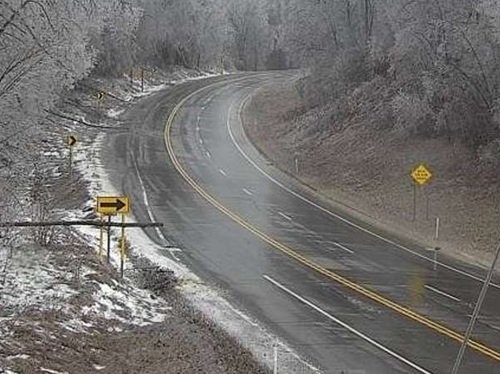A recent episode of the “Talking Michigan Transportation” podcast – produced by the Michigan Department of Transportation – sat down with Hugh McDiarmid Jr., communications director at the Michigan Department of Environment, Great Lakes, and Energy, to discuss how more frequent extreme weather events are disrupting wetland watersheds statewide.
[Above photo by the Michigan DOT]
“Swamp by another name is a wetland, just like a weed by any other name is a native plant,” McDiarmid explained. “Wetlands are vital resources for a lot of reasons, not only for the natural environment and biodiversity, but for flood control, storm water control. Think of a wetland as a nature sponge; lots of spongy soils that can absorb storm water that comes down in torrents and hold that water temporarily and release it very slowly back into the water system.”
However, he explained that well over half of the wetlands that used to exist in Michigan have vanished due to infrastructure construction, farming, and other events – along with even more coastal wetlands along the rivers and lakes.
“[That’s why] you see storm events that are overwhelming. Some of our man-made and natural systems that used to hold that storm water back, filter the pollutants from it and release it gradually, have been done away with,” McDiarmid said. “So we’re trying to alleviate that problem, both through man-made infrastructure [and] natural systems, maintaining the systems that we have, restoring the systems that used to exist, and encouraging – both through financing and guidance – what we call ‘green infrastructure,’ which means you don’t have to build a huge pipe to convey storm sewage if you have a lot of natural area in your community that can absorb that storm water.”
Those efforts also involve preserving flood plains and ensuring that, when construction buildings or other infrastructure, that the wetlands in those areas are either preserved and protected, or that, if there is no alternative but to build, engage in “mitigation efforts” such as creating man-made wetlands.
“So there are a lot of different strategies to protect the wetlands that we have left [and] to increase the wetlands that are available to ensure that we don’t do any more damage than necessary to those natural systems that are so vital,” McDiarmid said.
To hear the entire podcast episode, click here.
 States
States
Podcast: Flashing LED Lights Can Boost Roadway Safety
December 5, 2025 States
States

